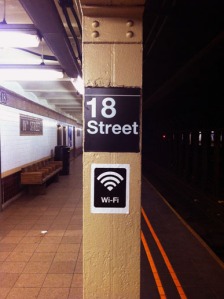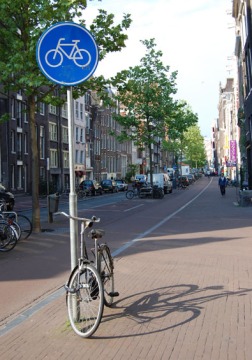It is hard to believe that Citi Bike has been around for only one month. Between all the love and the hate, it has truly been an exciting ride for the bike share program. Yesterday, Transportation Nation released some Quinnipiac polling data:
 The data show that overall “every age, income, party, gender and educational group supports the bike program.” However, there is one special group that has fully embraced a Citi Bike-specific NIMBYism, and that is the 65+ group, with 40% opposed and 37% in favor. This research did not surprise me, and it reminded me of something.
The data show that overall “every age, income, party, gender and educational group supports the bike program.” However, there is one special group that has fully embraced a Citi Bike-specific NIMBYism, and that is the 65+ group, with 40% opposed and 37% in favor. This research did not surprise me, and it reminded me of something.
Back in April, as part of NYU Wagner’s Day of Service, a group of transit nerds advocates teamed up with the Wagner Transportation Association (WTA), the Urban Planning Student Association (UPSA), the NYU Bike Share Program and Transportation Alternatives to hit the streets, seeking out bike-friendly businesses and collecting signatures for bike lanes on University Place. The idea was that in building a coalition of local businesses and residents that value the benefits of biking, we could help create a safe and mutually beneficial environment for cyclists in the NYU community.
We split up into two groups – one to engage local businesses and one to engage people on the street. I joined the second group, and was a bit weary of my task at hand. You know exactly what you do when you spot that annoying person on the sidewalk with a silly t-shirt and clipboard – you cross the street, answer a nonexistent phone call – whatever you can do to avoid eye contact. But on that lovely April day, I was that annoying person! And it was really fun. It took me no more than 30 seconds to get into full character.
I was pleasantly surprised to find that most passers-by were more than willing to sign the petition. I was less than pleasantly surprised to find that members of an older cohort hated me. Like, really hated me. One woman in particular, who I would place in her late 70s to early 80s, decided to tell me exactly what she thought about bike lanes, bikes, totalitarian governments, people like me, and some other stuff that I can’t remember. To paraphrase, she was not a fan. Now that I think of it, she reminded me a lot of Dorothy Rabinowitz in this excellent video.
One month in, the data are clear. Sorry, Dorothy, looks like you do not “represent the majority of citizens” of this city after all.








